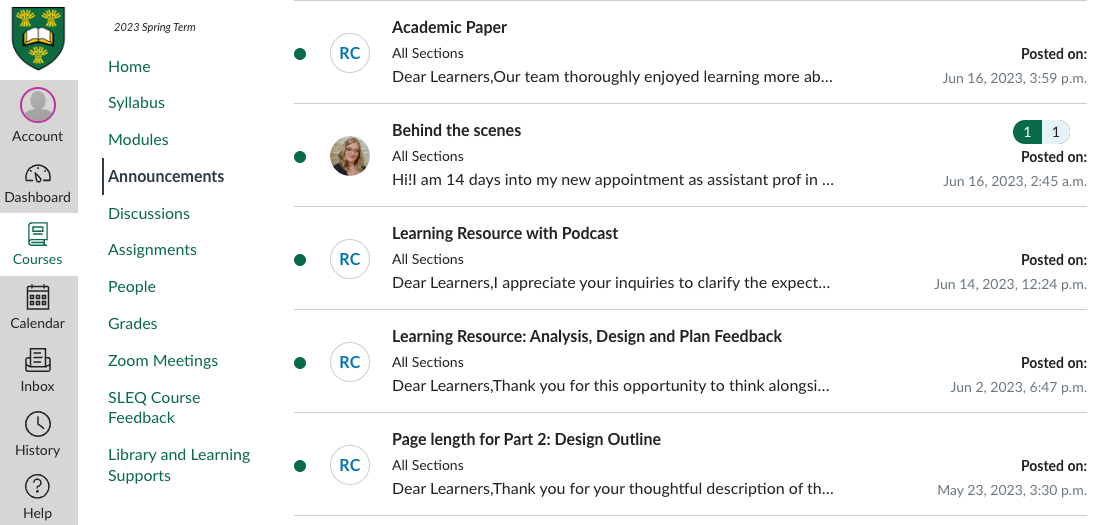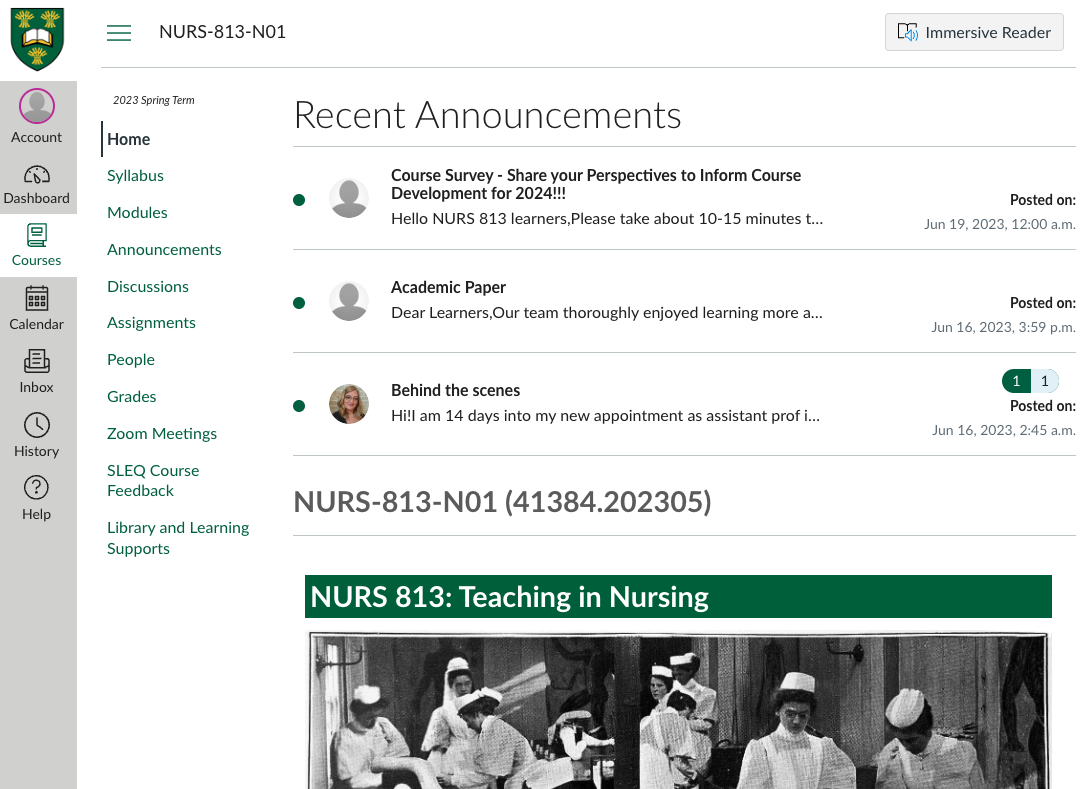Course announcements are one of the simplest and most effective ways to communicate with your class, whether you are teaching an entirely online, in-person, or a hybrid course. Particularly for online asynchronous learners, announcements offer a primary channel for regular information to be passed on from the instructor, and a significant tool for building a sense of instructor presence. In this article, we’ll cover some reasons you might send an announcement, a few good practices to keep in mind, and some options and tips particular to using the Announcements tool in Canvas.
Why might you want to make an Announcement?
A few examples of reasons to make an announcement are:
-
- Send timely reminders to motivate students and help keep them on track with course tasks.
- Point students to internal or external resources that will help them meet the learning outcomes of your course.
- Communicate (using text, audio, and/or video) in order to humanize your online course and create a sense of instructor presence.*
- Respond to common questions or concerns from students, or clarify expectations around upcoming assignments.
- Offer general or “whole-class” feedback after assignments and exams (e.g., quash common misconceptions, or highlight topics that many of your students might have struggled with).
- Celebrate student successes or highlight relevant campus events.
- Deal with class logistics of all kinds (e.g., communicate schedule changes, room updates, or teaching interruptions due to illness and emergency).

What are some good practices when creating Announcements?
A few good practices to keep in mind when you are creating course announcements are:
-
- Keep your announcements concise. Students have a lot of competing priorities, and might not read everything in a lengthy announcement.
- Use some select formatting (like bolded text, or even emojis 💡) to draw attention to key messages within your announcement.
- Resist the urge to repeat information that might be listed elsewhere in the course. If you wish to remind students of something, provide a link to where that information can be found.
- Stick to a regular schedule. If you send weekly announcements, sending these at the same time every week will help to establish a predictable rhythm and pace to the learning activities of your course. One common strategy is starting the week on Monday with a brief recap of what happened last week, and some information about what to expect in the upcoming week.
- Give announcements meaningful titles. This will help students find information later if they need to.
- Don’t go overboard with the number of announcements you send. Again, students have a lot of competing priorities. If you overuse announcements, students may find it easier to “tune them out.” Try to strike a balance with how frequently you are asking for their attention.
Options to consider with the Canvas Announcements tool:
The Announcements tool in Canvas offers a few features that give you some additional options you might want to consider:
-
- If you want, you can set your Home Page to show the most recent announcements. Since this is the “landing page” or “entry point” of your course, this is a good way to have your announcements appear someplace central. It will also change the content of the Home Page as you release new announcements, giving your online course more of dynamic energy or a sense of liveliness (see an example in the screenshot below).
- To transform announcements into a dialogue and a place for two-way communication, consider enabling comments or allowing liking. It’s a good idea to include a clear call to action if you are looking for student participation. For example, you might share some study tips for an upcoming exam and ask students, “What strategies will you use to help study? Share a tip in the announcement comments.”
- For a quick way to share audio or video messages, use the “Record media” option within the Rich Content Editor.
- You can set announcements to be released on a particular day and time. This is a good way to plan ahead for key communications later on in the term, and means that you don’t always need to be at your computer to send out your announcements.

A few more Canvas tips:
-
- When you copy a course from term to term using the “Course Import” tool, any Announcements that you posted during that previous delivery will copy over with the other course content. This could be very confusing for students. Be aware of this after you perform a copy, and take some time to delete or edit any announcements that are no longer relevant, or set them on a delay to be released at the correct time in the term.
- Students have full control of their Canvas notifications and what events trigger an email or a push notification on their mobile device. If you are planning to use the announcements function and want to make sure students don’t miss these messages, let students know what to expect, and remind them to adjust their settings as needed. Send them to this link if they need more help with this: How do I manage my Canvas notification settings as a student?
Acknowledgements:
Thanks to Angelique Pearson and Oregon State University for sharing this blog post, which helped us sort through these ideas much more quickly.
Many thanks as well to Roslyn Compton and Natasha Hubbard Murdoch for kindly allowing us to share some images from their NURS 813 course.
Photo by Pressmaster from Pexels.
This resource is shared by the Gwenna Moss Centre for Teaching and Learning (GMCTL), University of Saskatchewan, under a CC BY-NC-SA license.


